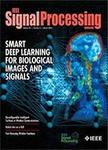版权所有:内蒙古大学图书馆 技术提供:维普资讯• 智图
内蒙古自治区呼和浩特市赛罕区大学西街235号 邮编: 010021

作者机构:Univ Michigan Ann Arbor MI 48109 USA IBM Thomas J Watson Res Ctr Yorktown Hts NY USA Lawrence Livermore Natl Lab Livermore CA 94550 USA MIT IBM Watson Artificial Intelligence Lab Cambridge MA 02139 USA Univ Michigan Elect Engn & Comp Sci Ann Arbor MI 48109 USA Univ Michigan Engn Ann Arbor MI 48109 USA Syracuse Univ Elect Engn & Comp Sci Syracuse NY 13244 USA
出 版 物:《IEEE SIGNAL PROCESSING MAGAZINE》 (IEEE信号处理杂志)
年 卷 期:2020年第37卷第5期
页 面:43-54页
核心收录:
基 金:MIT-IBM Watson AI Lab U.S. Department of Energy [DE-AC52-07NA27344]
主 题:Optimization Estimation Signal processing algorithms Linear programming Signal processing Convergence Approximation error
摘 要:Zeroth-order (ZO) optimization is a subset of gradient-free optimization that emerges in many signal processing and machine learning (ML) applications. It is used for solving optimization problems similarly to gradient-based methods. However, it does not require the gradient, using only function evaluations. Specifically, ZO optimization iteratively performs three major steps: gradient estimation, descent direction computation, and the solution update. In this article, we provide a comprehensive review of ZO optimization, with an emphasis on showing the underlying intuition, optimization principles, and recent advances in convergence analysis. Moreover, we demonstrate promising applications of ZO optimization, such as evaluating robustness and generating explanations from black-box deep learning (DL) models and efficient online sensor management.